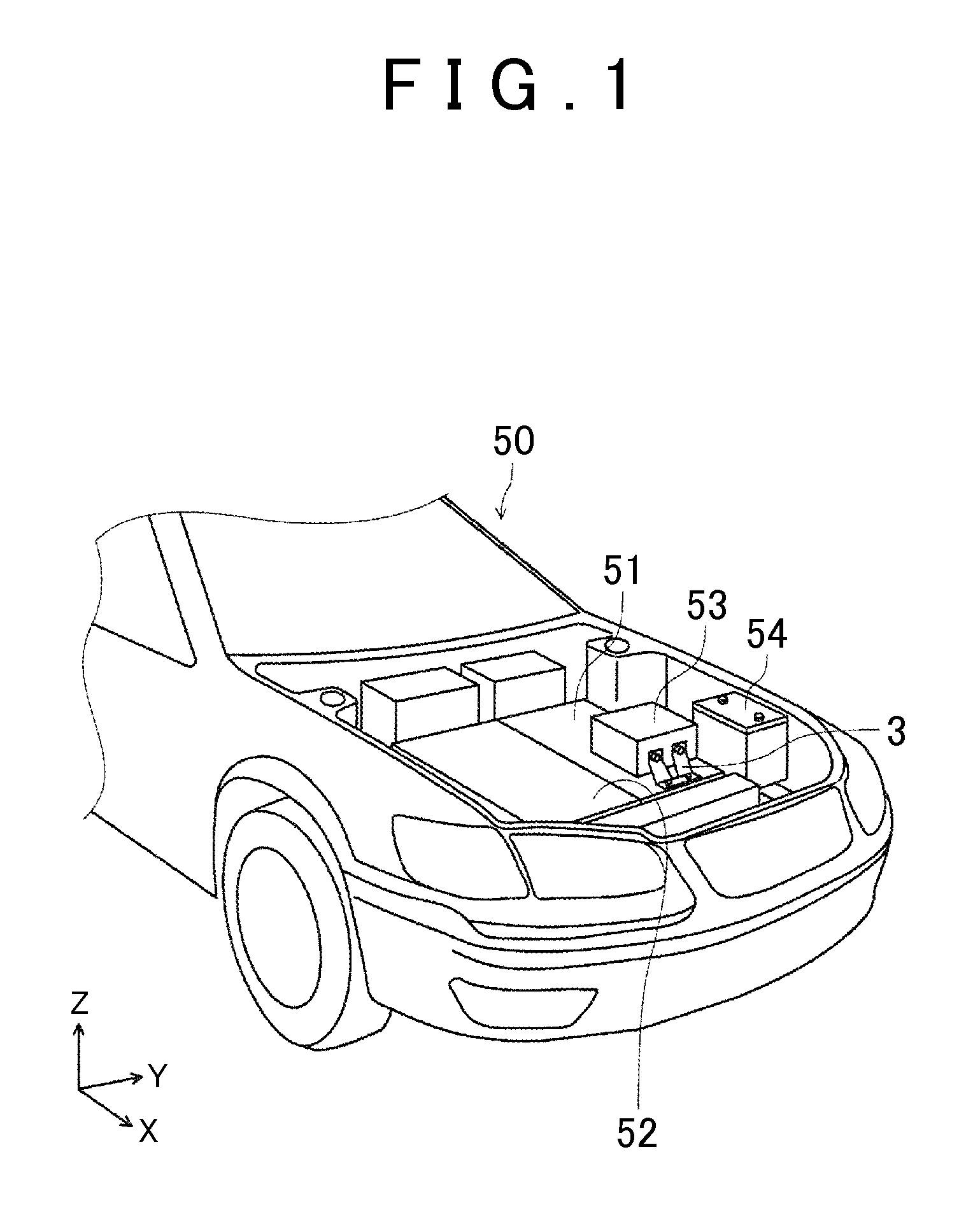In-vehicle structure for inverter and bracket unit for inverter
a technology of inverter and inverter, which is applied in the direction of battery/cell propulsion, electric devices, transportation and packaging, etc., can solve the problems of large electromagnetic noise generated by inverter configured to supply current to the drive motor, relatively strong electromagnetic noise (radio noise), etc., and achieve effective restraint of the inductance of braided wires
- Summary
- Abstract
- Description
- Claims
- Application Information
AI Technical Summary
Benefits of technology
Problems solved by technology
Method used
Image
Examples
Embodiment Construction
[0022]The following describes an in-vehicle structure for an inverter according to an embodiment with reference to the drawings. First described is an example of a device layout in an engine compartment of an electrically-driven vehicle. The electrically-driven vehicle in the present embodiment is, more specifically, a hybrid vehicle including an engine and a motor for driving. FIG. 1 is a perspective view illustrating a device layout in an engine compartment 50 of the hybrid vehicle. The engine compartment 50 on a vehicle front side is provided with an engine 52, a transmission 51 including a motor and gears therein, a sub-battery 54, and an inverter 53 configured to convert electric power of a main battery (not shown) into alternating current so as to supply the alternating current to the motor. Note that other various devices are provided in the engine compartment 50, but those devices are not illustrated herein. The engine 52 and the transmission 51 are fixed to a side frame (no...
PUM
 Login to View More
Login to View More Abstract
Description
Claims
Application Information
 Login to View More
Login to View More - R&D
- Intellectual Property
- Life Sciences
- Materials
- Tech Scout
- Unparalleled Data Quality
- Higher Quality Content
- 60% Fewer Hallucinations
Browse by: Latest US Patents, China's latest patents, Technical Efficacy Thesaurus, Application Domain, Technology Topic, Popular Technical Reports.
© 2025 PatSnap. All rights reserved.Legal|Privacy policy|Modern Slavery Act Transparency Statement|Sitemap|About US| Contact US: help@patsnap.com



